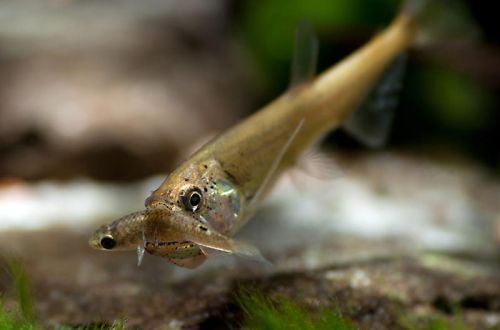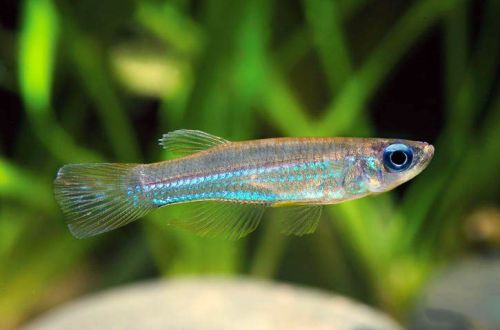
vampire fish
Payara, Vampire Fish or Mackerel Hydrolic, scientific name Hydrolycus armatus, belongs to the Cynodontidae family. It is one of the largest river predators in South America. Not suitable for home keeping except in the largest private or public aquariums.

Contents
Habitat
The fish lives in most of the major rivers of South America, mainly in the Orinoco and Amazon. They prefer clear rivers with fast currents and bubbling water, usually in deep places at the base of rapids, at the bottom of waterfalls, where high turbulence is created.
Brief information:
- Requirements and conditions:
- The volume of the aquarium – from 2000 liters.
- Temperature – 24-28°C
- Value pH — 6.0–8.0
- Water hardness – 5–15 dGH
- Substrate type — stony
- Lighting – moderate
- Brackish water – no
- Water movement is strong
- Size – more than a meter
- Food – small fish
- Lifespan – about 2 years in captivity
Description
In nature, adults exceed 1 meter in length, in an artificial environment a little less, but still reach an impressive size and weight (more than 10 kg). It has an elongated swift body, tapering towards the tail, designed for lightning attacks on prey. A large head with a mouth is studded with numerous sharp teeth. In an adult, two huge fangs grow on the lower jaw, they are so long that there are special holes in the upper jaw so that they pass through. The coloration is silvery with a dark tint, sometimes spotted.
Food
In their natural habitat they feed on small fish, but the basis of their diet is another well-known predator – Piranha. Young individuals can eat large earthworms and river shrimps.
Maintenance and care, arrangement of the aquarium
Big fish require an appropriate aquarium with a volume of about 2000 liters, and this is more than 2 tons of load, taking into account the weight of the tank itself and the design. The environment should resemble a riverbed with a fast flow of water. Maintaining the high quality of water of such a large volume requires the installation of specialized expensive equipment, and the maintenance of the aquarium itself is not a small material and financial cost. The content of Payara is the lot of wealthy aquarists.
Behavior and Compatibility
Being in small groups is most natural for this type of fish, but it is not uncommon for Payara to be kept alone. Compatible only with species of comparable size, any fish that can fit in its mouth will certainly be eaten.
Fish diseases
The causes of most diseases are associated with unsuitable conditions of detention (water quality, lack of space, organic pollution, etc.), which is a very difficult task to maintain at an acceptable level. It is worth noting that even under favorable conditions, these fish rarely live in captivity for more than 2 years.





